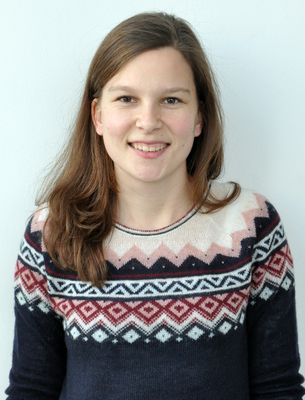Lena Vogt
Lena Vogt
Doktorandin
Fibrous scaffolds with enhanced functionalities for cardiac tissue engineering
Betreuer: Prof. Dr.-Ing. habil. Aldo R. Boccaccini
Unlike other tissues such as bone or skin, myocardial tissue exhibits very limited intrinsic regeneration ability. Due to this shortage, cardiovascular diseases such as myocardial infarction could lead to the loss of cardiac cells and the formation of scar tissue, eventually resulting in chronic or congestive heart failure. Here, a promising approach represents the application of tissue engineered constructs, i.e. cardiac patches [1]. This project involves the development, characterization and optimization of a new family of bilayered and biomimetic fibrous scaffolds based on synthetic polymers combined with natural components of the extra cellular matrix (ECM). The designed scaffolds, which should exhibit mechanical properties and degradation behaviour suitable for their use as a cardiac patch, will mimic the anisotropic structure and mechanical properties of the native cardiac ECM and will exhibit surface functionalities to provide cell contact guidance [2]. The project is funded by the German Science Foundation (DFG) and involves collaboration with Prof. Felix Engel (Professorship for Experimental Renal and Cardiovascular Research, University Hospital Erlangen).
[1] H. Jawad, et al., Myocardial tissue engineering: a review, J. Tissue Eng. Regen. Med. 1 (2007) 327–342.
[2] M. Tallawi, et al., Poly (glycerol sebacate)/poly (butylene succinate-butylene dilinoleate) fibrous scaffolds for cardiac tissue engineering, Tissue Eng. Part C: Methods 21 (2015), 585-596.
2022
- , , , , :
DEVELOPMENT OF APPROACHES FOR A TWO-LAYER PATCH COMBINING ELECTROSPINNING AND 3D PRINTING WITH IMPROVED ELECTRICAL STIMULUS TRANSMISSION AND SELF-REGULATING VISCOELASTIC PROPERTIES FOR APPLICATION IN CARDIAC TISSUE ENGINEERING
In: TISSUE ENGINEERING PART A, NEW ROCHELLE: 2022
2021
- , :
Random and aligned electrospun poly(ε-caprolactone) (PCL)/poly(1,8-octanediol-co-citrate) (POC) fiber mats for cardiac tissue engineering using benign solvents
In: European Polymer Journal 160 (2021), Art.Nr.: 110772
ISSN: 0014-3057
DOI: 10.1016/j.eurpolymj.2021.110772 - , , , :
Poly(Glycerol Sebacate) in Biomedical Applications—A Review of the Recent Literature
In: Advanced Healthcare Materials (2021)
ISSN: 2192-2640
DOI: 10.1002/adhm.202002026
2020
- , , , , , , , , :
4D Biofabrication of fibrous artificial nerve graft for neuron regeneration
In: Biofabrication 12 (2020), Art.Nr.: 035027
ISSN: 1758-5082
DOI: 10.1088/1758-5090/ab94cf
2019
- , , , , , :
Nanofibrous Composite with Tailorable Electrical and Mechanical Properties for Cardiac Tissue Engineering
In: Advanced Functional Materials (2019), Art.Nr.: 1908612
ISSN: 1616-301X
DOI: 10.1002/adfm.201908612 - , , , , , :
Poly(ε-caprolactone)/poly(glycerol sebacate) electrospun scaffolds for cardiac tissue engineering using benign solvents
In: Materials Science and Engineering C 103 (2019), Art.Nr.: 109712
ISSN: 0928-4931
DOI: 10.1016/j.msec.2019.04.091
2018
- , , , , , , :
Electroconductive Biohybrid Hydrogel for Enhanced Maturation and Beating Properties of Engineered Cardiac Tissues
In: Advanced Functional Materials 28 (2018), Art.Nr.: 1803951
ISSN: 1616-301X
DOI: 10.1002/adfm.201803951 - , , , :
Electrospun Zein Fibers Incorporating Poly(glycerol sebacate) for Soft Tissue Engineering.
In: Nanomaterials 8 (2018), Art.Nr.: 150
ISSN: 2079-4991
DOI: 10.3390/nano8030150

